
Von Tencha zu Matcha
Wie wird die Tencha Auslese zu feinem Matcha Pulver gemahlen? Ein Blick hinter die Kulissen

In 2019 we started looking for a healthy, delicious alternative to coffee and came across the Superfood Matcha. Rich in antioxidants and other positive properties we began to test Matcha from Japan and quickly found that not every Matcha is the same!
And we found the newly won lifestyle so convincing that we absolutely wanted to share it! Because a cup of matcha, rich in nutrients and antioxidants, could probably be the simplest form of self -love! And you only need a few minutes to include this tea ceremony in your routine!
Matcha is the first stop on this trip, but our vision is much larger.
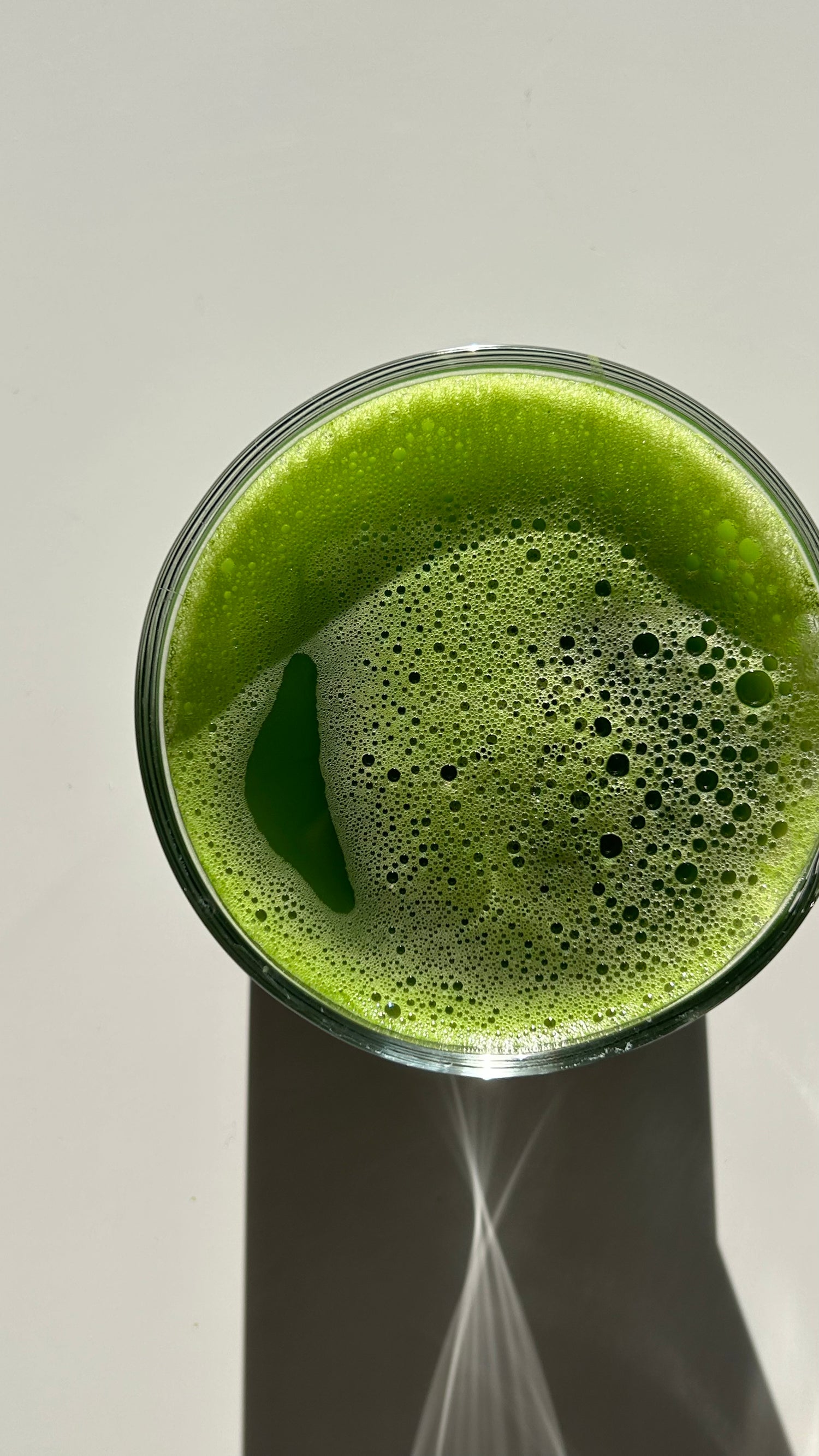
Organic quality, regular ground controls and a general examination of the existing nutrients and heavy metal pollution are important factors for us.
So we made it our task to find the best Matcha in the world.
We tried many different types of matcha, searched for a matchapower, which of course is mild in taste and soft enough to be able to drink it without the addition of milk or syrup. We found what we were looking for in the region of a traditional and well-known tar region in Japan on a family-run farm for generations.
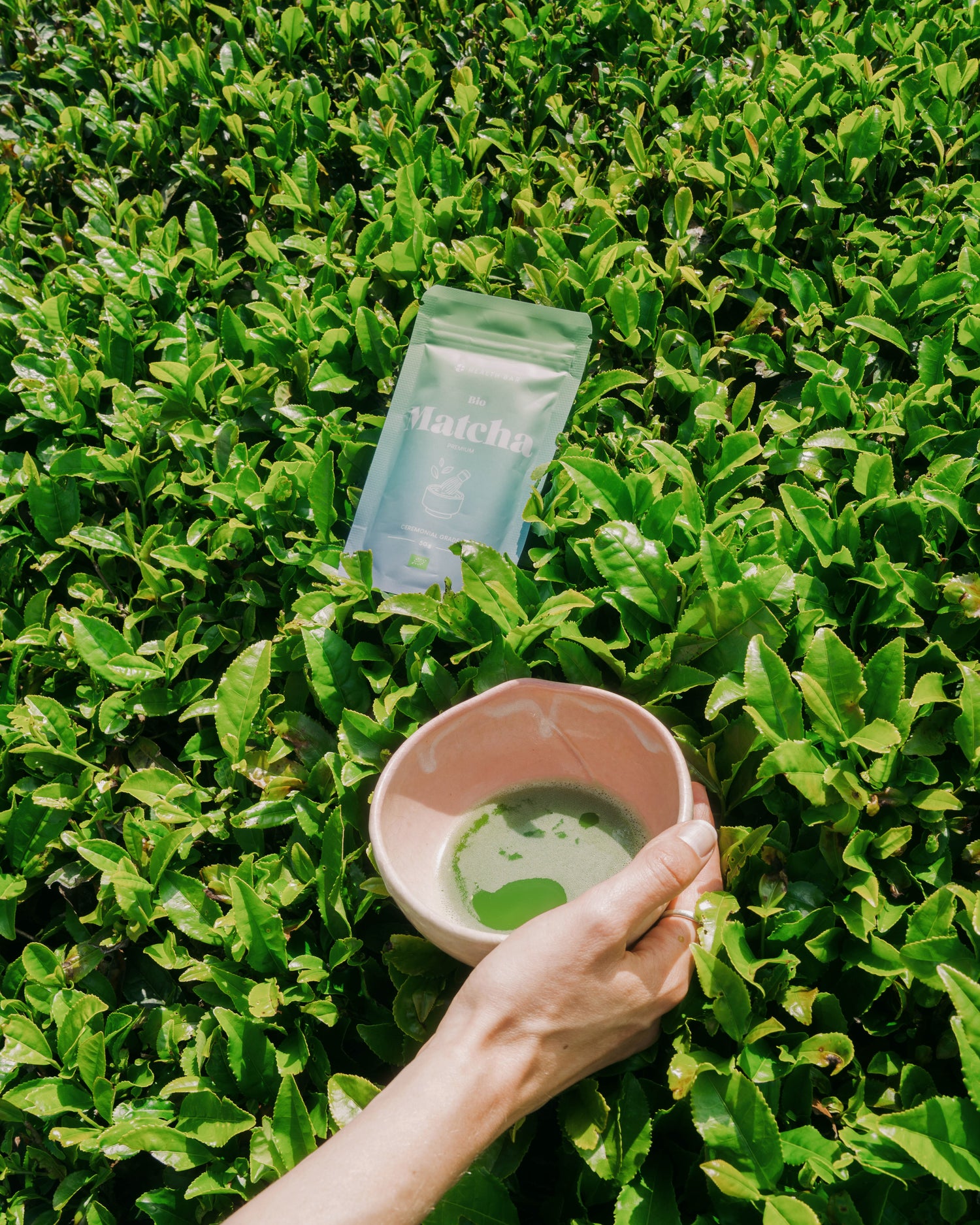
Quality is our top priority-especially with our organic-certified Matcha powder and our Matcha chocolate. We carefully choose our ingredients and rely on sustainable cultivation without pesticides. This is how we guarantee pure taste and excellent quality.


Our tea arm is a traditional company that has been in the family business for several generations and has been producing organic matcha for several decades.
The cultivation area for the Matcha tea is one of the best and at the same time oldest tea growing areas in Japan: the Uji region, west of Osaka. The region is known for its clean water and nutrient -rich soil, free of pesticides. The right climate can be found on site: the fog from the rivers Uji and Kizu keeps the tea plants moist and reduces the risk of frost damage.
The tea farmers traditionally protect the plants with reed with bamboo sticks from the sun. This increases the proportion of chlorophyll in the leaves and makes the taste softer. The extension takes place without pesticides.
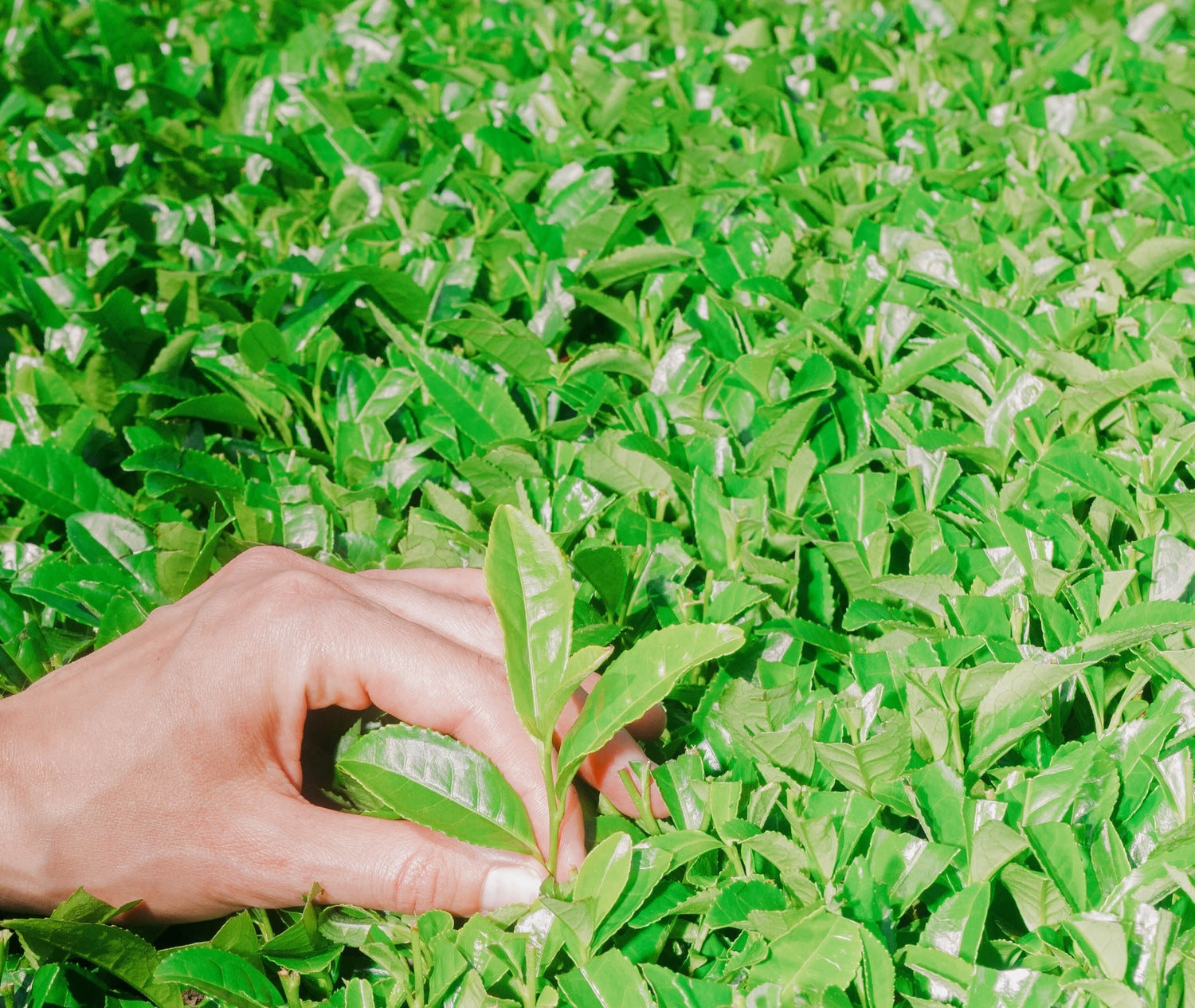
Annual soil samples, as well as laboratory tests regarding the heavy metal and radiation exposure, are carried out in order to be able to deliver the best possible quality. In addition, each batch is carefully checked for its mineral property.
Our quality is confirmed by strict standards of the eco-certificate of the Japanese certification body Jona and the German organic certification.
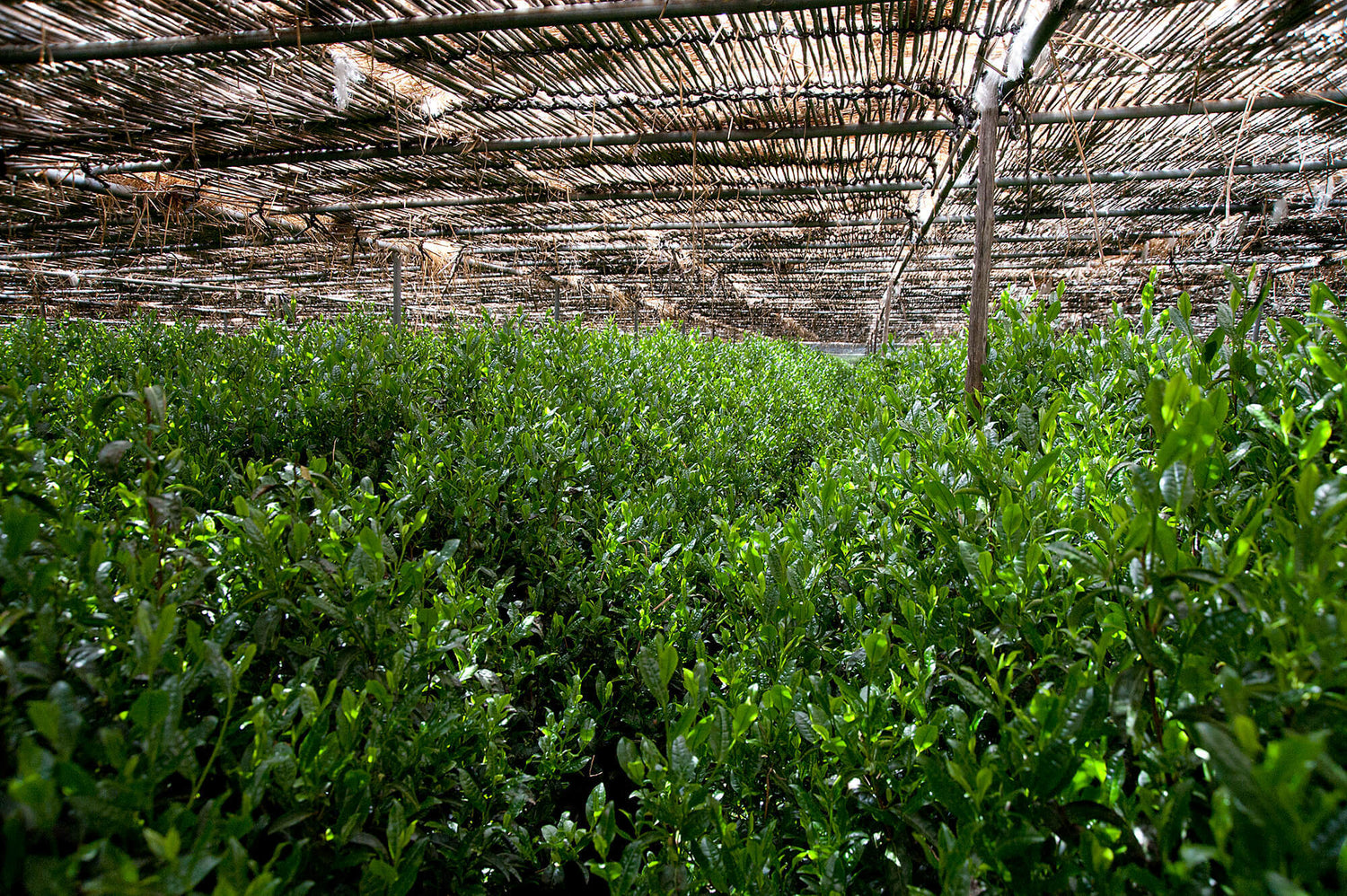
Around April, shortly after the emergence of new shoots on the bushes, the fields are covered, whereby the plants are almost completely protected from sunlight.
In Uji, reed has been spread to bamboo sticks for centuries. Today, only a few farmers are using this traditional method. The shadow enables tea to bundle and multiply nutrients. Shrubs that are not exposed to sun exposure increase the production of chlorophyll many times over.
L-theanin is also important, the amino acid, which is responsible for the Umami taste in tea. The gentle taste is preserved due to the shady cultivation.
Premium quality at Health Bar
The first harvest of green Matcha tea begins at the end of April and ends at the end of May. After the leaves are picked, new ones appear in their place and will be harvested at the end of June and early July. The third harvest of the year takes place in August. With every harvest, the tea becomes a little weaker, low in color and taste. The leaves within a single harvest also vary in their quality - only the tip of the stem with the two smallest leaves are picked for the tea with the premium quality.
How tea becomes Matcha


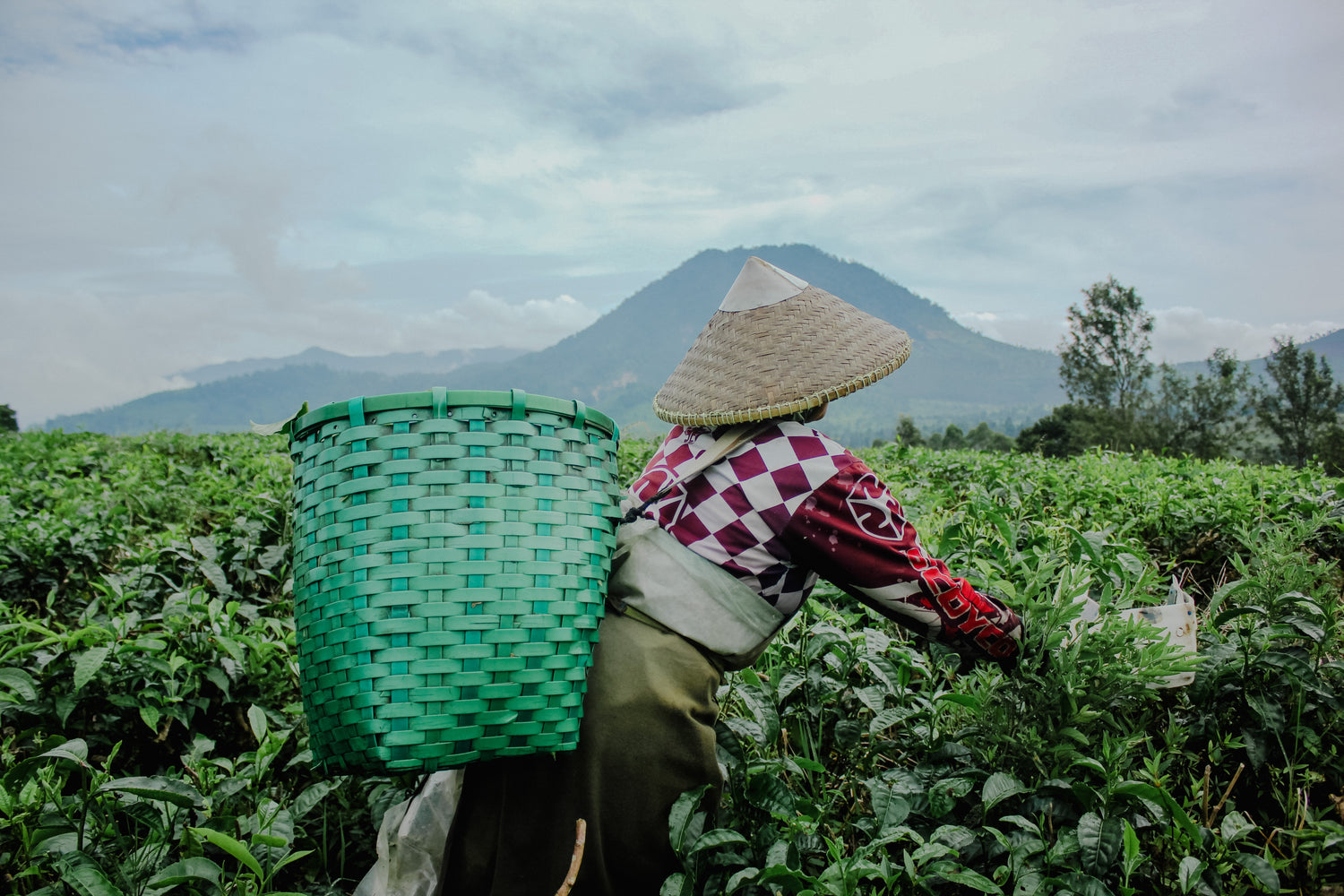
After the harvest, the tea leaves are immediately steamed to prevent oxidation and fermentation. This process ensures that the tea retains its bright green color, fresh aroma and its valuable nutrients. After the steam bath, the tea is dried with gentle air flows. The leaves shrink to about a sixth of their previous volume
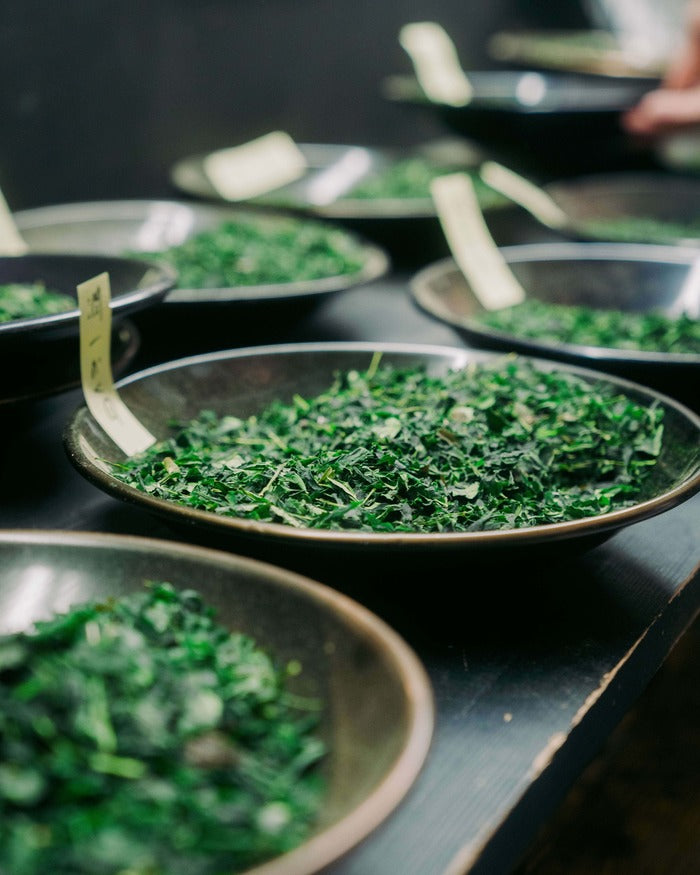
The dried tea leaves are sorted by size, weight and color. Then your stems and veins are separated. The clean leaves are cut into smaller pieces and finally dried for a while. The finished tea is subjected to an end control and all the unnecessary parts are removed and sencha green tea) processed so that all resources are used in the best possible way. The end result is small, dark green, perfectly cleaned leaves. This tea is called Tencha and is the raw material from which Matcha is made.
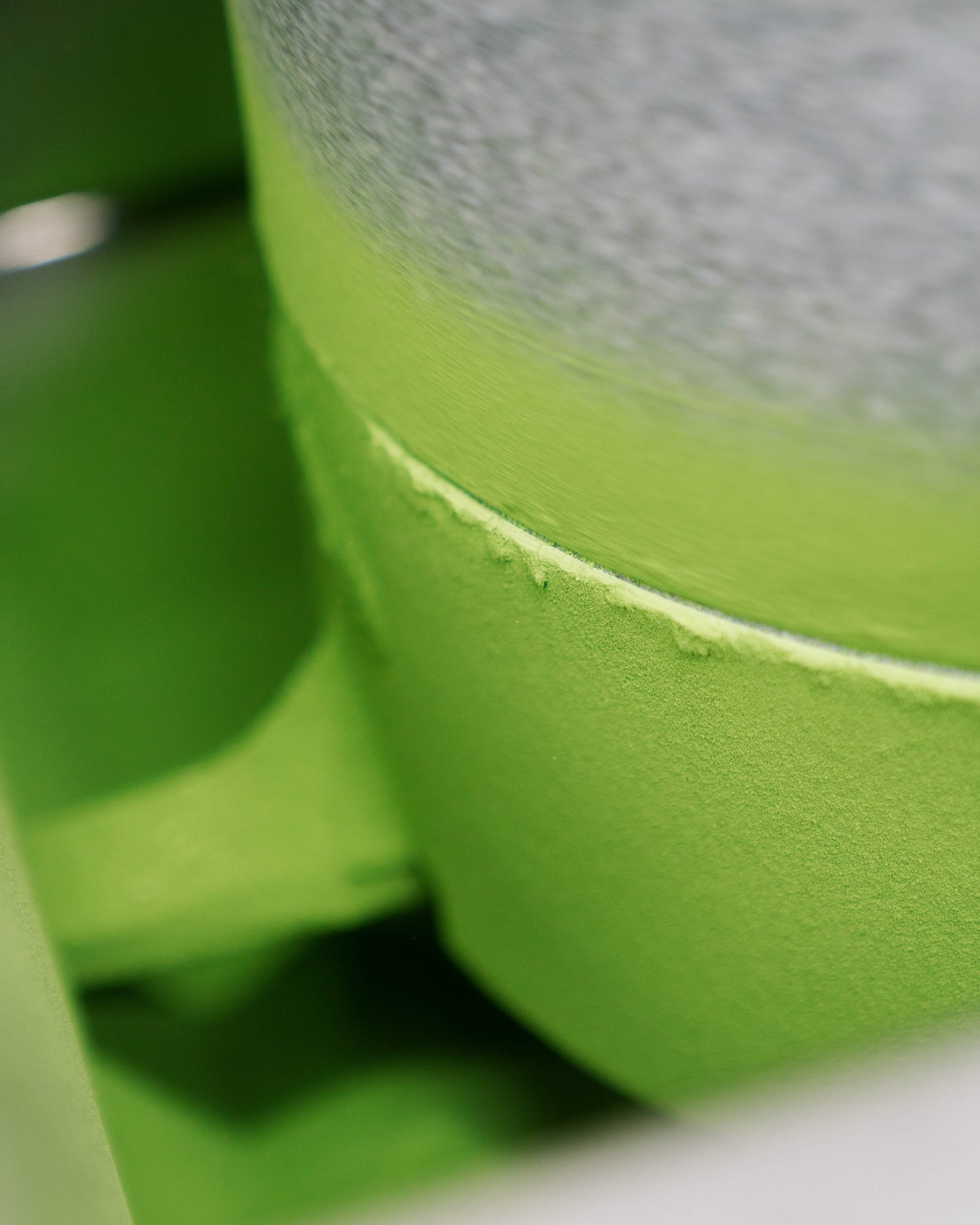
To produce Matcha, the leaves of Tencha are taken and ground in tile mills. Two specially shaped granite stones rotate and grind the tea slowly into powder. The process requires time and precision. Thanks to its powdery texture, it combines perfectly with water, but is not soluble to such as cocoa powder.

The last step is a detailed test of the tea produced. Measurements of the nutrient content are carried out and tests are carried out on possible contaminants. The Health Bar Matcha is also certified by the independent Japanese organization Jona, which exhibits a special JAS certificate. This certification confirms that our tea comes from organic, pesticide -free cultivation and was not stressed by external pollutants, such as air pollutants, during extension and production. The German organic seal is awarded in Germany by an independent position that not only controls the tests carried out in Japan, but also the way our tea is stored.